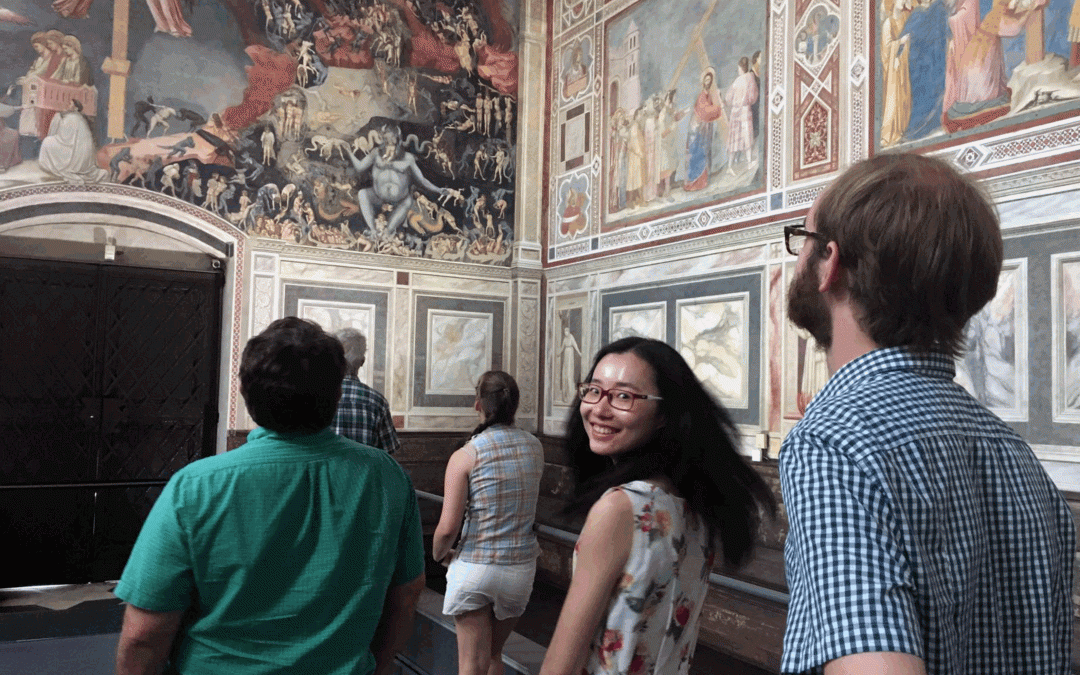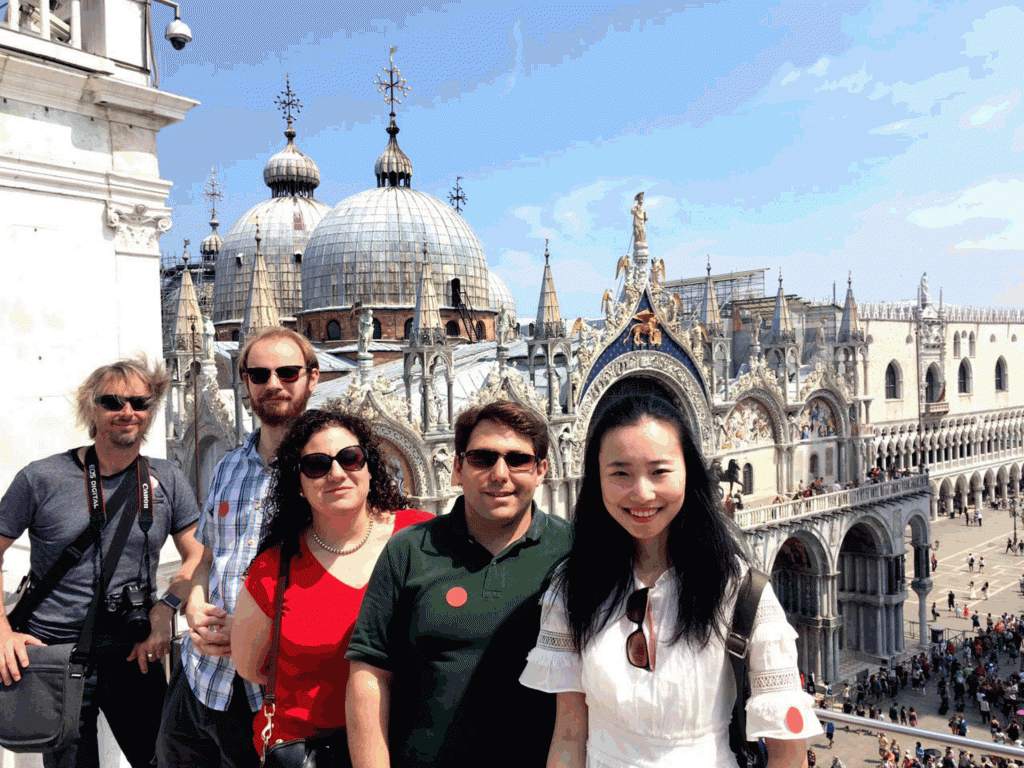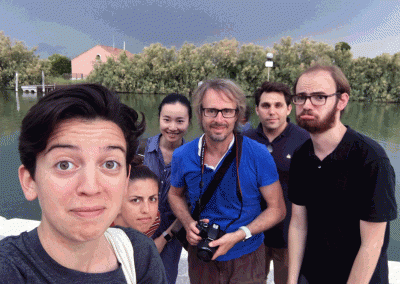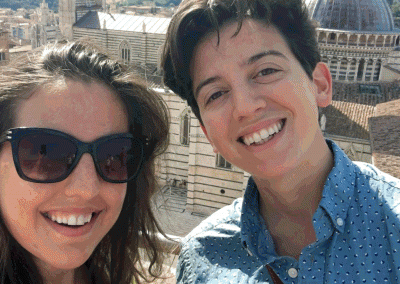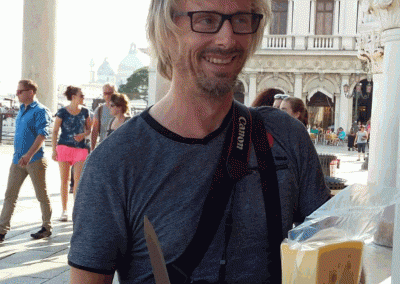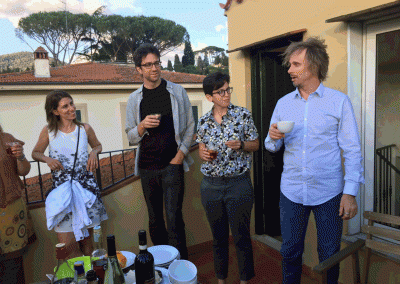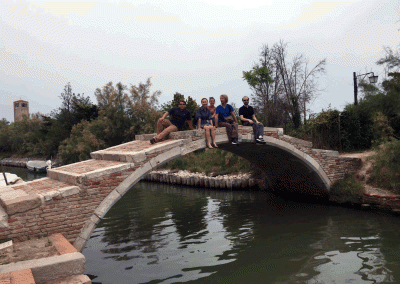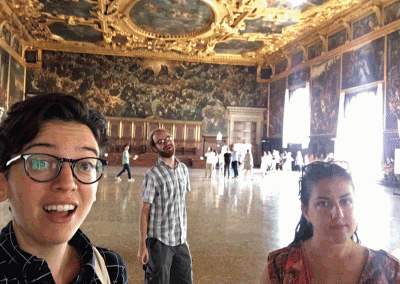In June of 2017, Professor Niall Atkinson of the Art History program took a group of six Ph.D. students on a two-week tour of Italy. The journey began on June 5th and ended on June 19th, bookended by four days each in Florence and Venice. In between, the class made day trips to Siena, Mantua, and Padua for the must-see Scrovegni Chapel, with optional excursions to Montalcino and Pienza. They also spent a couple of days trying to recharge at bucolic agriturismi in San Casciano dei Bagni and Barbarano Vicentino. The trip was the culmination of the traveling seminar “Florentine Topographies: Art, Architecture, and Urban Life.”
One of the student participants Brendan Small (in green above) recalls his experience:
“We have just seen that all great art is the work of the whole living creature, body and
soul, and chiefly of the soul.” —John Ruskin, Stones of Venice.
Our class spent the Spring Quarter in Chicago working on self-directed projects related to the artistic, architectural, religious and political history of early modern Italy. The final assignment was devised as a conference paper, and so each week we would meet to discuss the progress of our research and present our findings. The projects varied widely — from considering papal processions and funerary monuments in Florence to fresco cycles in Venice and Siena. The collaborative process was brilliant, as we not only benefitted from the weekly feedback, but we all had a stake in each other’s projects and spent ten weeks building excitement and anticipation until we could experience them in situ.
In addition to engaging with our objects in person, we spent every day visiting museums, historic sites, churches, and chapels. Appointments at places like the Uffizi in Florence, the Palazzo Pubblico in Siena, and the Accademia in Venice were punctuated by opportunities to see incredibly rare sites. We enjoyed a private tour of the Chiostro Grande and the papal apartments in the church of Santa Maria Novella in Florence, and we explored the small island of Torcello in Venice. Professor Atkinson added his expert knowledge and infectious enthusiasm for rigorous on-site investigation at every turn, and we were honored to have other terrific faculty members like Professors Ada Palmer and Federica Caneparo join us for several visits as well. We also visited the Kunsthistorisches Institute and the Villa I Tatti, meeting the staff and fellows who provided terrific insights regarding how to best take advantage of those fellowship opportunities. The many friends and professional acquaintances Professor Atkinson has in Italy often joined us for dinner or an aperativo, which provided a relaxing atmosphere to network. We returned to Chicago better personally and professionally. It was the type of trip that is good for one’s soul. It imprinted so many terrific things on us that we will all carry
forward.
Niall alla Ruskin-17lz68n
Professor Atkinson’s huge block of cheese – Italian food is another vital aspect of culture
Niall Toast-21gtkm5
Professors Atkinson and Caneparo introduce students to Italian colleagues and partner programs.
